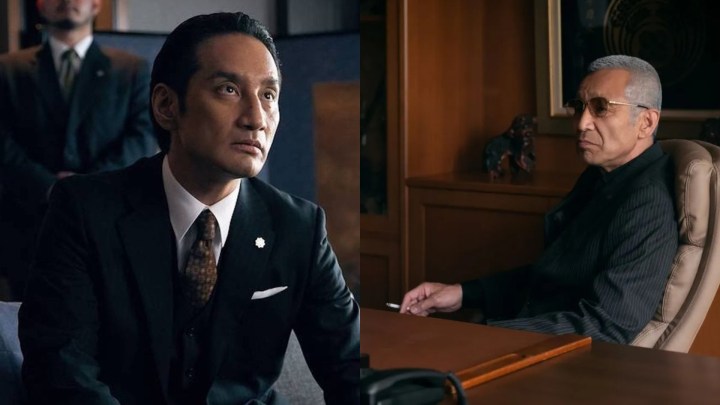J. T. Rogers’ HBO Max original series Tokyo Vice gave fans an addictive and tantalizing look into Japan’s seedy underbelly of organized crime. It was the showrunner’s first foray into the realm of TV, and it was a strong start thanks to this crime drama’s story branching out its dramatized take on journalist Jake Adelstein’s truth-seeking ventures with even more interesting supporting characters.
These various moving pieces all had something important to provide for the plot’s shady yakuza turf war at the core of its conflict. And as strange as it might sound on the surface, the perspectives used in Tokyo Vice to drive the story forward flesh out the anatomy of Japan’s organized crime world similar to how Sega’s hit Yakuza video game series breaks it down.
Note: Spoilers for HBO Max’s Tokyo Vice are discussed in this article.
Through the lens of moral paragons and the morally conflicted

Comparisons between the HBO series Tokyo Vice and Sega’s action-adventure Yakuza might come off as especially jarring when considering the latter’s duality in tone and atmosphere. Yakuza games, whether it’s Kazuma Kiryu’s six-game saga — and more counting remakes — or the recent soft-reboot with Like a Dragon, the series has always been a tale of two games.
On one hand, you have a cinematic, soap-opera-like main story that’s emotionally serious and chronicles Kiryu’s battle for justice and the soul of the city of Kamurocho against his former yakuza superiors. On the other hand, you have the over-the-top campy side missions that include Kiryu teaching a professional dominatrix to gain her confidence or playing karaoke rhythm games through his and Goro Majima’s imaginations as a ’90s hard-rock band or a colorful J-Pop group.
It certainly isn’t a knock on Yakuza, as that stark tonal dichotomy has always been part of the series’ irresistible charm and a great way to break up the immersive melodrama of the main story. But the dramatic half of Yakuza with Kiryu still draws some parallels with the crime-noir of Tokyo Vice and how it uses Sato in the criminal underworld as a grounded point of view. That is, even though the former is depicted as a moral paragon while the latter is very much psychologically conflicted and morally ambiguous.

When Sato is presented in the show, audiences are already given cues that he still feels like a pretender trying to convince his superiors of his place within Hitoshi Ishida’s slice of the yakuza — and his brother-in-arms Yoshihiro Kume’s validation. Sato is berated hard for any of his mistakes, and his shaky confidence is evident on screen. That insecurity and inner turmoil leak out in scenes as subtle as him failing to impress some kids at the local arcade he collects protection money from, or palpably tense ones like Ishida demanding Sato to kill Kume upon discovering the latter to be a plant for ruthless yakuza rival Shinzo Tozawa.
Meanwhile, when Kiryu is shown to us in his prime, which is most of his life, the Dragon of Dojima is presented as a shining example for the community. He’s almost like the fictional city of Kamurocho’s Superman, as he’s essentially an arbiter for a smaller scale take on “truth, justice, and a better tomorrow,” complete with a Batman-like “no-kill rule” and noble stance on redemption. Never mind players being able to beat thugs over the head with bikes, trash cans, couches, and pretty much anything Kiryu can get his hands on nearby.
However, in the Yakuza 0 prequel game, Kiryu’s origins show him a little rawer and a little more unsure of himself. Like Sato, Kiryu was brought into the yakuza by a higher-up who picked him up by the scruff of his neck with the promise of a better life should he pull his weight in the organization.
But that too, along with his image of the yakuza, starts to crumble once he’s thrown in the center of an underworld conspiracy and a series of power struggles. As brooding and somber as Tokyo Vice‘s Sato is, especially when compared to the steady and stoic Kiryu, Sato never seems fully on board with the brutality of the yakuza, no matter how much he wishes he was.
A cutthroat life of power plays and gangster bureaucracy

To different extents, both Yakuza and Tokyo Vice start by showing the audience a romanticized version of what the yakuza represents through the lens of Kiryu and Sato, respectively. Vice‘s Ishida claims to staunchly govern with the “code of honor” of a classic yakuza. And while Yakuza admittedly retains a somewhat rosy depiction of the underworld by using someone as heroic as Kiryu, both images are deconstructed once these characters progress through their story arcs.
And it’s through those deconstructions that both series flesh out the cutthroat bureaucracy and hierarchy of the yakuza. Kiryu sees the corruptive entanglements of the yakuza when he severs his ties — or at least as much as he can — with the sprawling main story introducing the various moving pieces that make up these organizations.
Tokyo Vice shows a much more tightly-scaled story in comparison, as it should as a crime-noir series, but Sato is the character that helps audiences the most in venturing deeper behind the shadowy veil the yakuza creates for itself. Even the thin veneer of perceived romanticism that the “classical” yakuza like Ishida hold up for themselves is challenged by the impending threat posed by the aforementioned, and younger, Tozawa.
These messy, entangling webs of the yakuza that Sato and Kiryu find themselves in tie back to something that Detective Hitoro Katagiri warned Jake about early on in Tokyo Vice. Whether it started as a favor, professional courtesy, or recruitment, in the life of organized crime, you can never truly get out once you’re in deep enough.
All episodes of Tokyo Vice are available to stream now on HBO Max.
Editors' Recommendations
- Kaitlyn Dever cast as Abby in The Last of Us season 2
- The best TV crime dramas to stream now on HBO Max
- Ansel Elgort is a man in a new land in Tokyo Vice trailer




